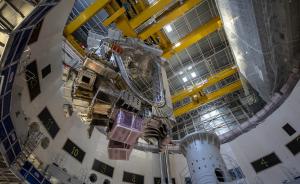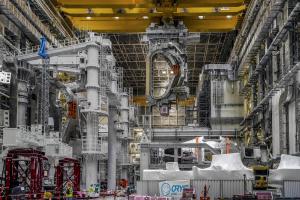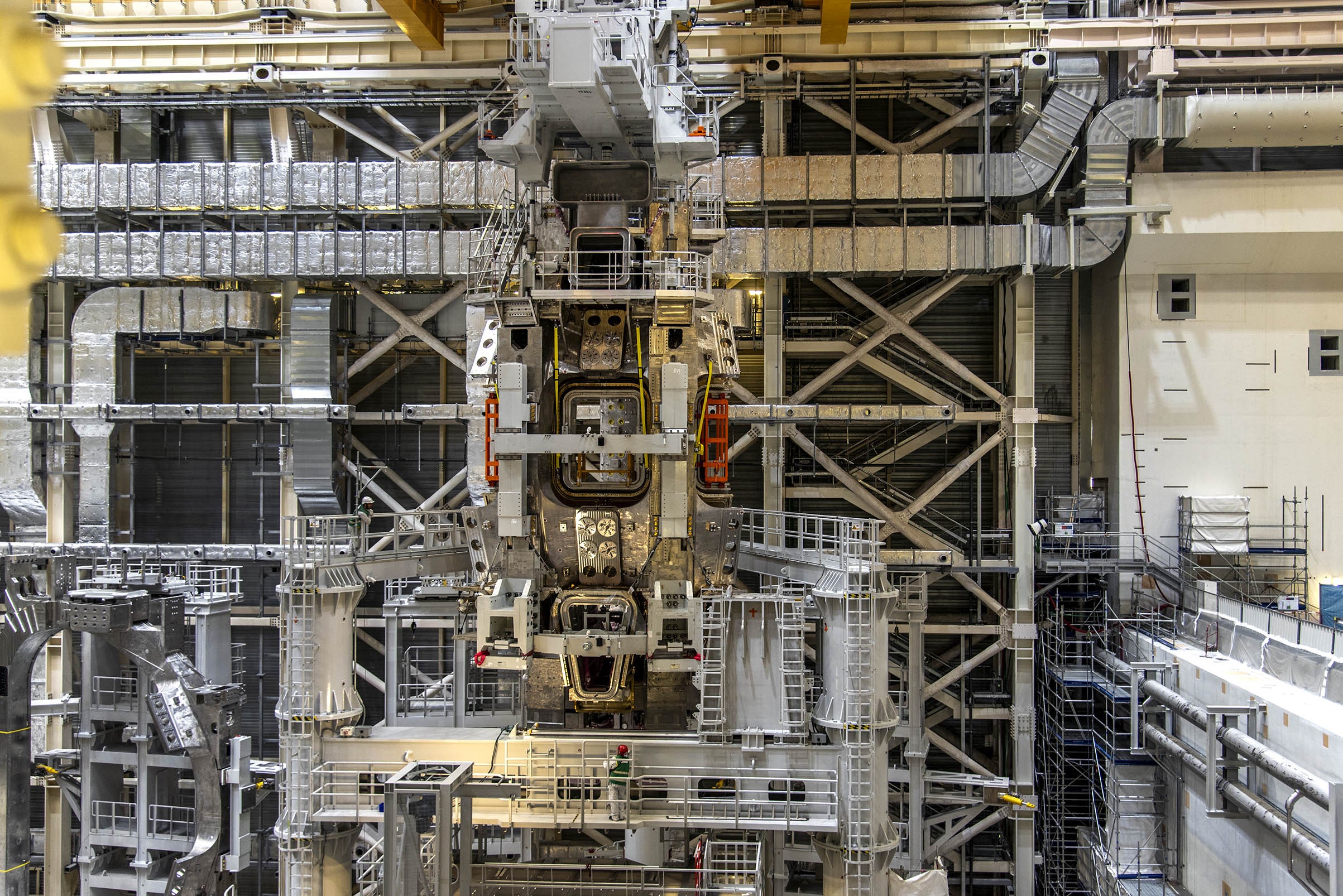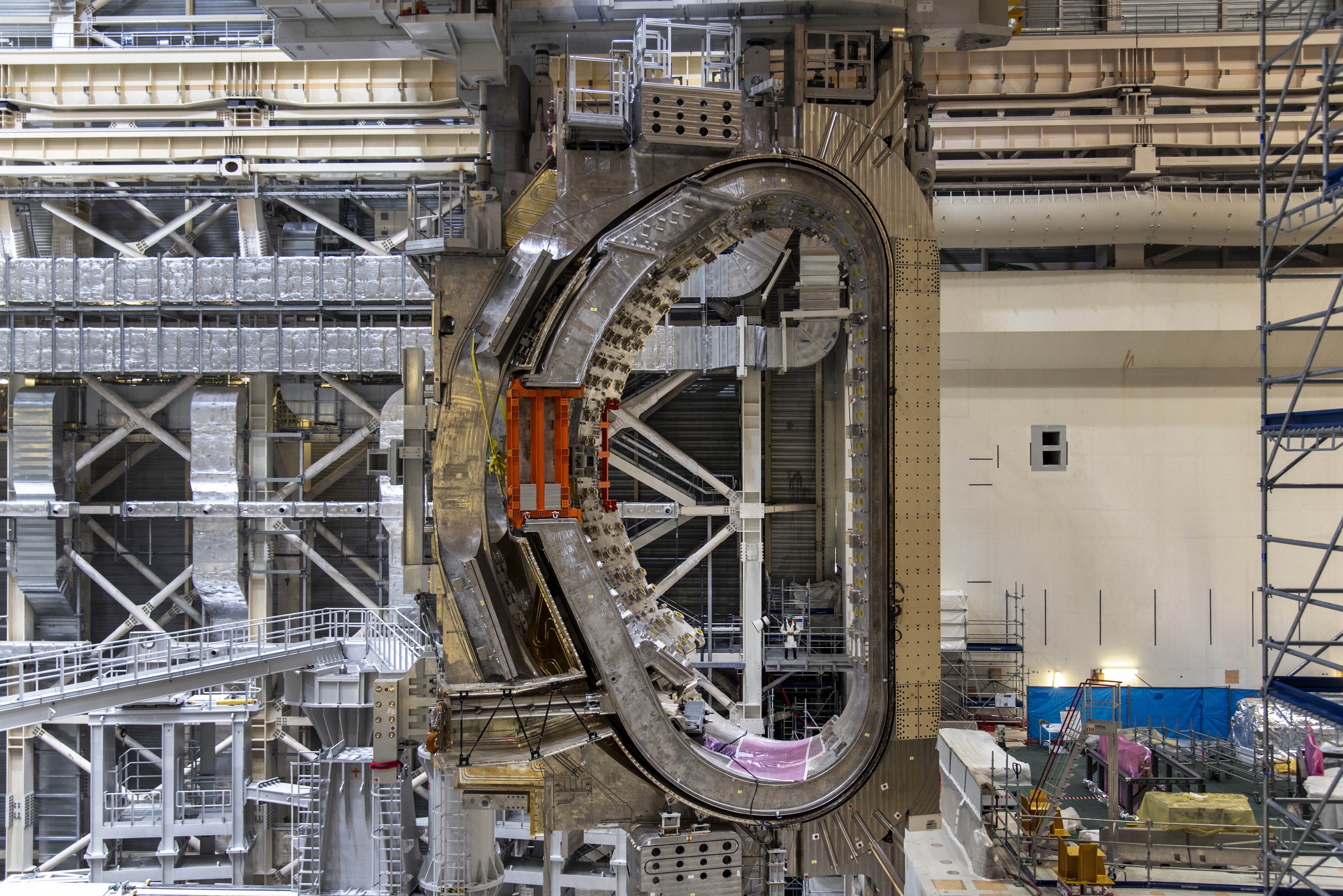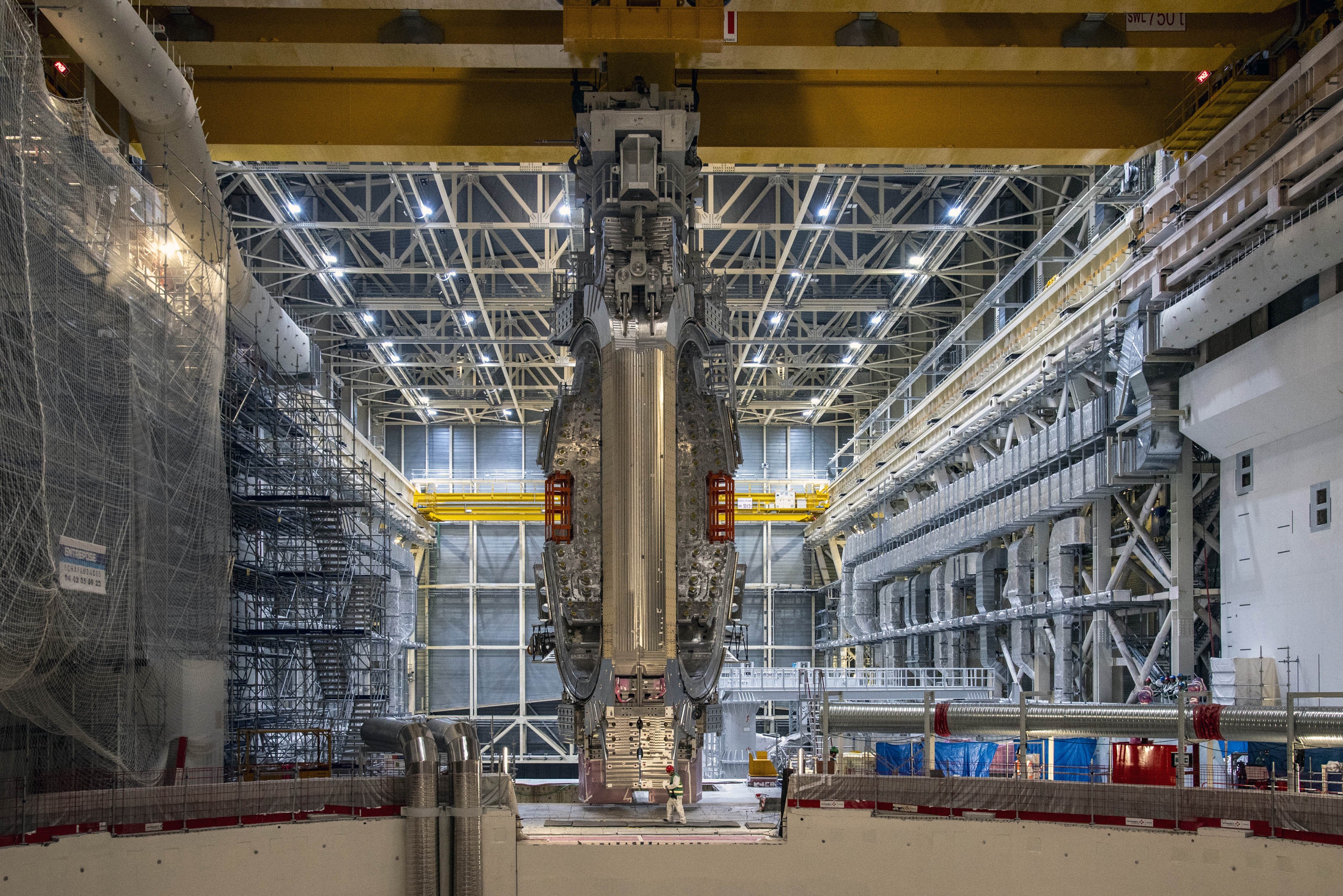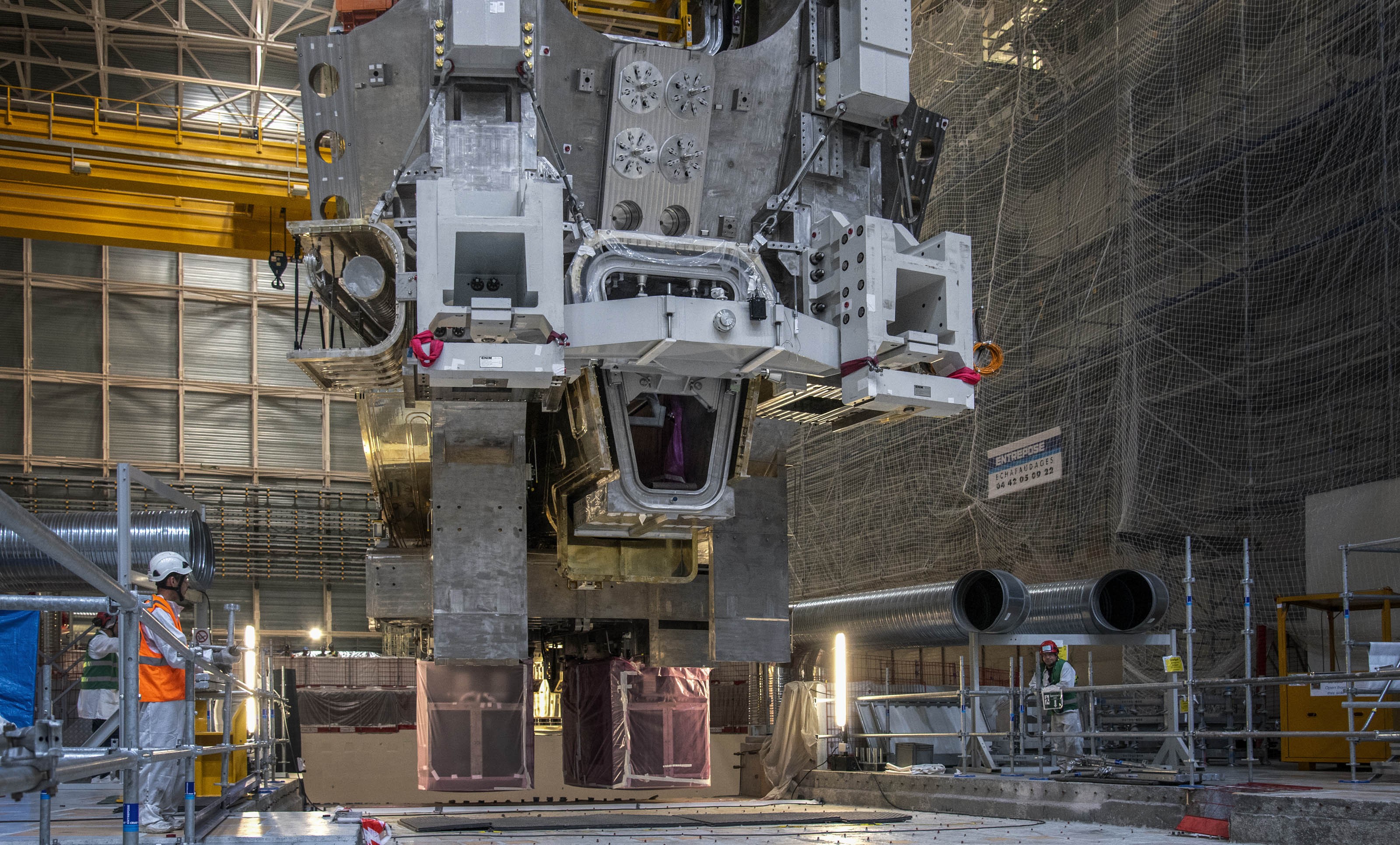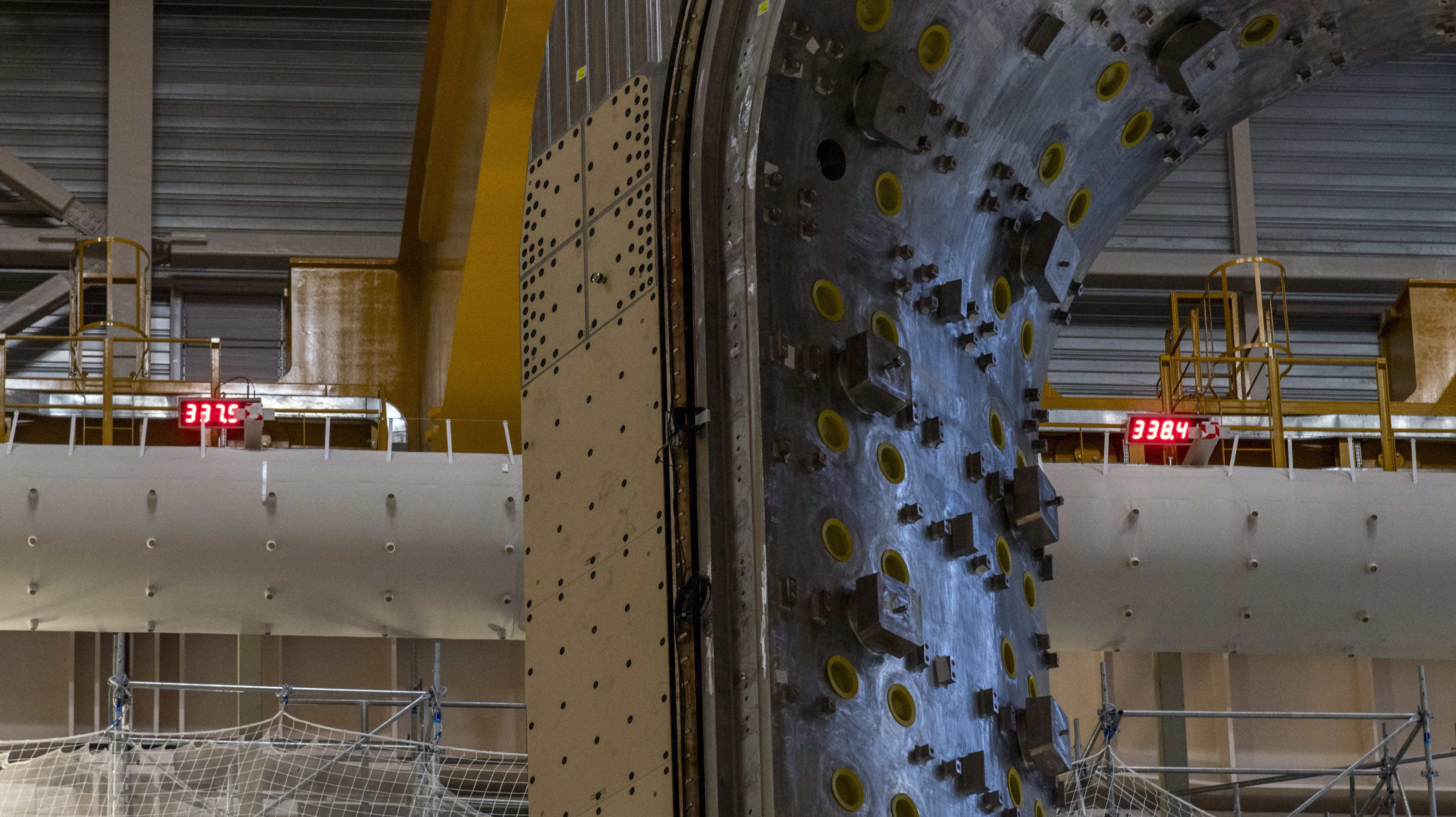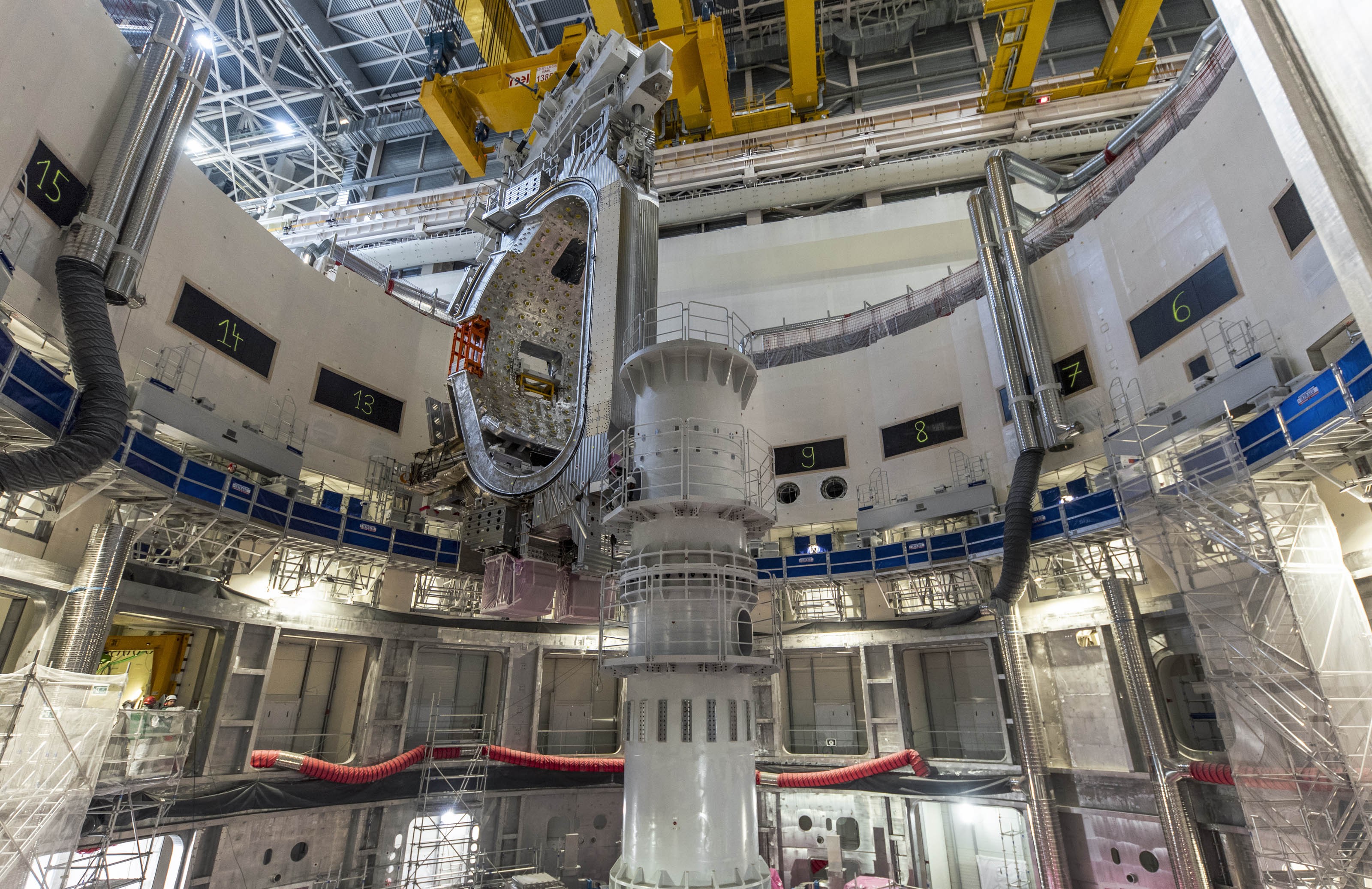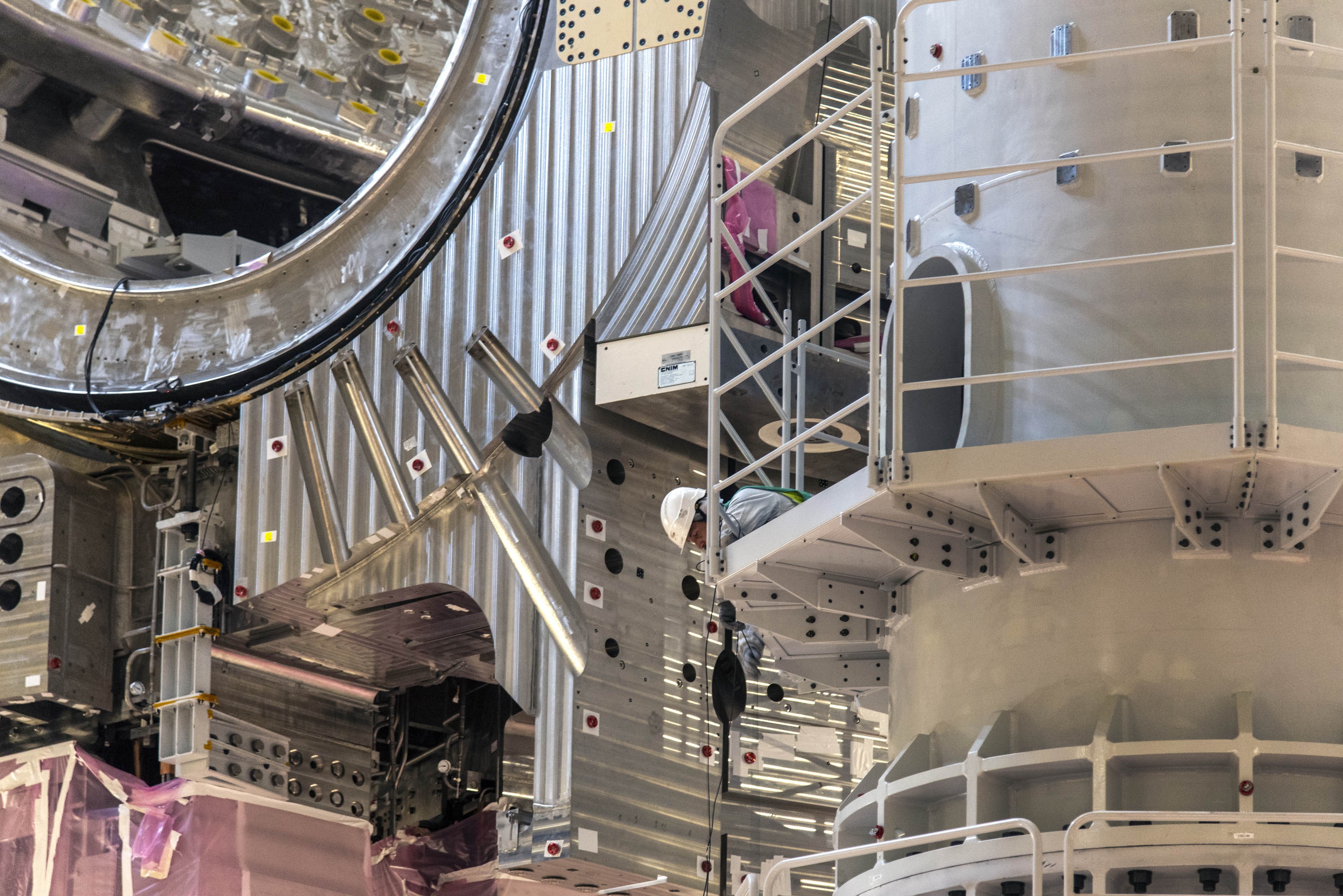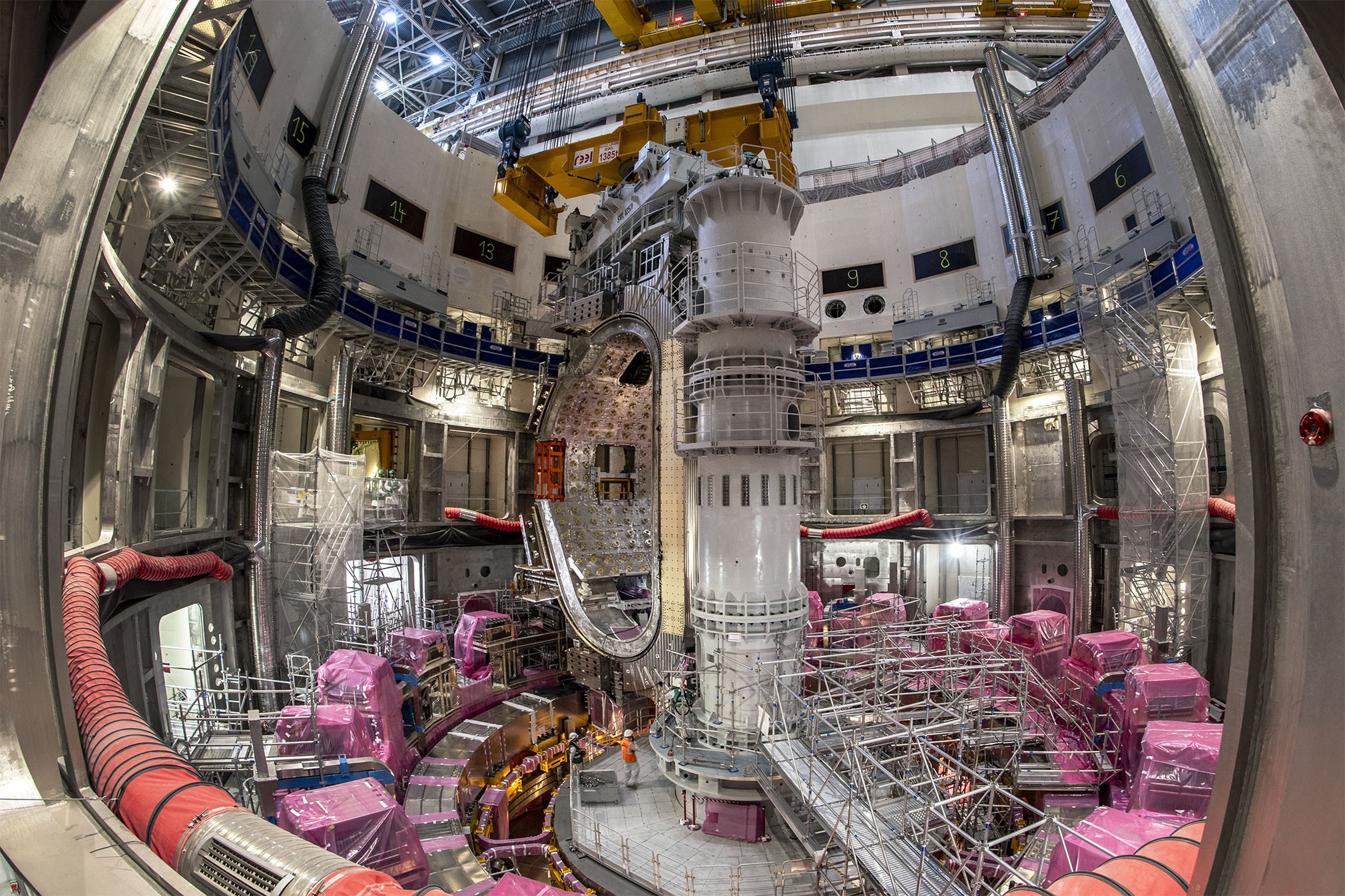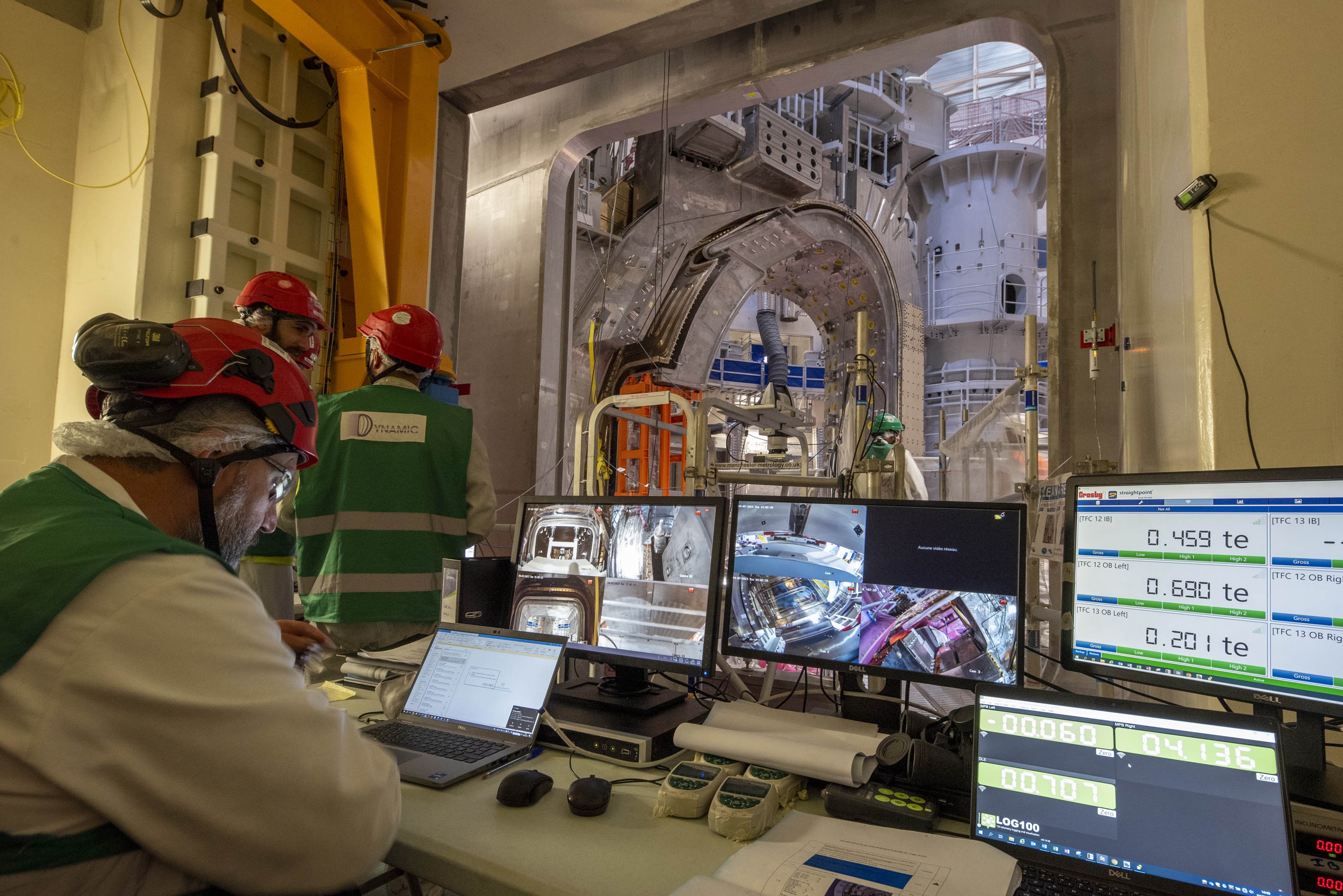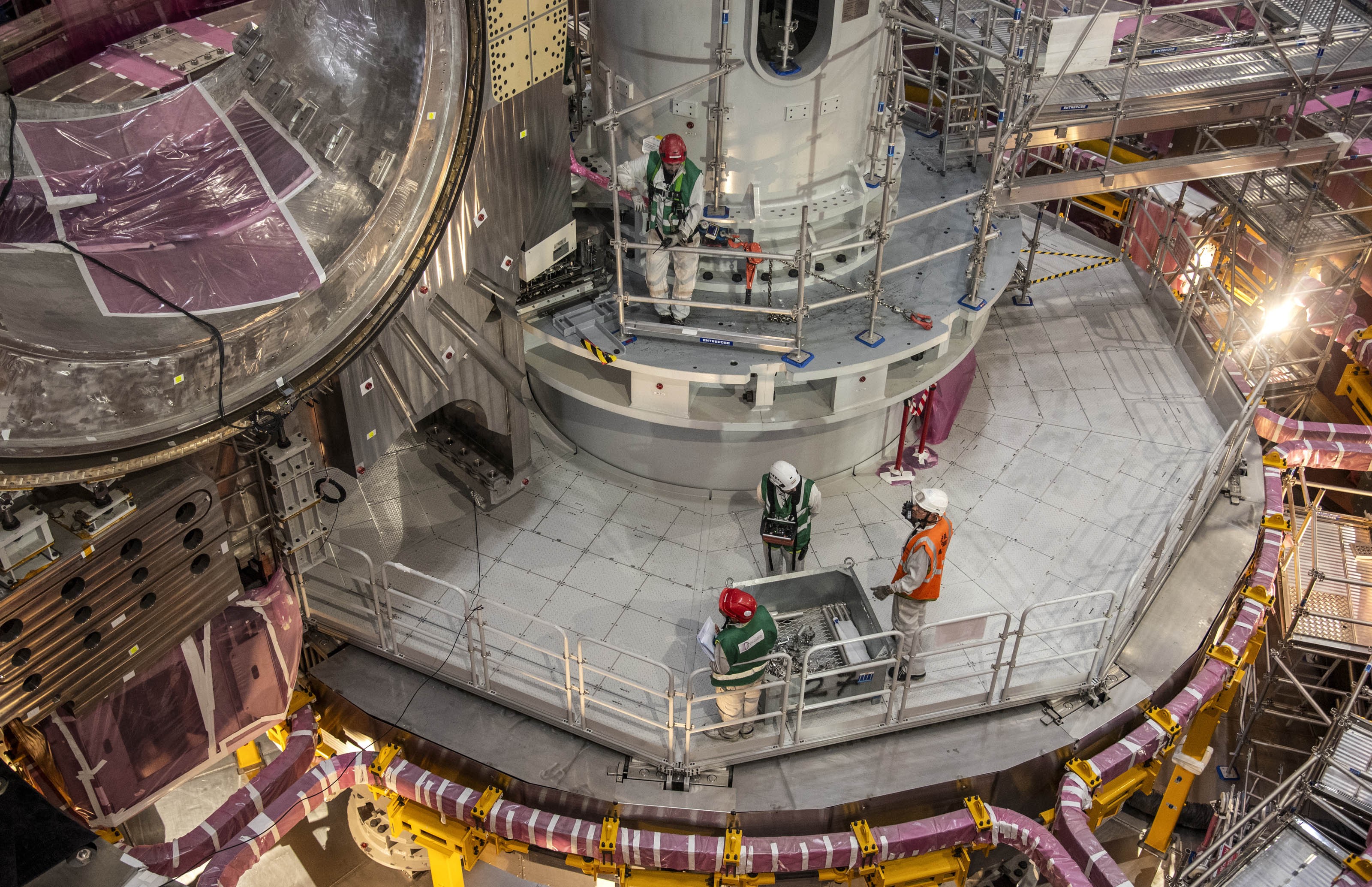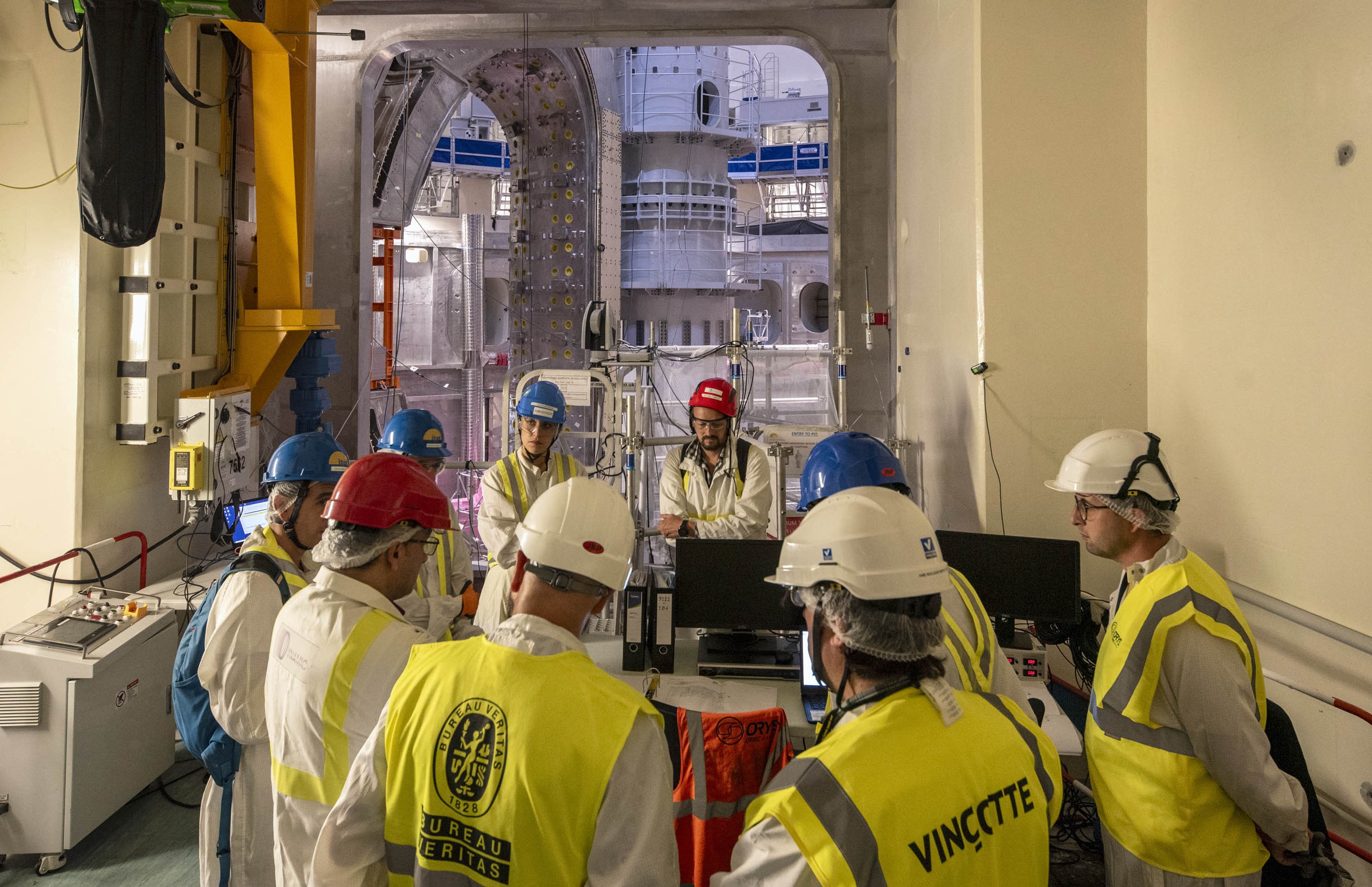Quatre jours pour un « rétrolevage »
L'extraction proprement dite a débuté le 4 juillet par une manœuvre de « pré-levage » qui a consisté à soulever la charge quelques centimètres. Pour l'opération principale, il a fallu définir plus d'une centaine d'étapes, puis les valider et les intégrer à la procédure de levage : libérer le module de ses points d'ancrage, le soulever puis le transporter jusqu'au portique de l'autre côté du mur du Hall d'assemblage. Pour réaliser ces manœuvres successives (levage, rotation, avancée, rotation, avancée, descente), il était essentiel de déterminer avec une grande précision la position relative de tous les éléments concernés : la charge proprement dite, les équipements du pont roulant et les systèmes de support au niveau de la zone de réception.
Comme pour l'opération du mois de mai 2022, la détermination du centre de gravité de la charge constituait l'un des principaux défis. « Il s'agit d'un module de nature composite. Lorsqu'elles sont en place dans le puits, la chambre à vide et les bobines de champ toroïdal ne sont reliées entre elles par aucun moyen mécanique, explique Daniel Coelho. Pendant la phase de levage, les outils de calage les solidarisent afin de former une charge homogène dotée d'un centre de gravité commun. »
En dépit du haut degré de technicité de l'opération, qui faisait appel à de nombreux capteurs et caméras disposés à des emplacements stratégiques, les « observateurs » ont joué un rôle clé dans la précision et la sécurité d'ensemble de la procédure. « Un capteur nous donne des informations mais seul l'œil humain, et le cerveau auquel il est relié, sont capables d'analyser et de comprendre une situation puis de prendre la bonne décision », souligne Daniel Coelho. Les 5 et 6 juillet, pendant les manœuvres de levage et de descente du module, une dizaine d'observateurs ont ainsi suivi de près les passages les plus délicats : la montée le long de la colonne centrale du puits, le franchissement du mur de séparation et la mise en place dans le portique de sous-assemblage.
Après s'être fièrement dressé à l'intérieur du puits d'assemblage pendant près de 15 mois, le module de secteur est maintenant installé dans le portique. La préparation de l'ouverture synchronisée des ailes du portique et la dépose des bobines de champ toroïdal, puis des panneaux d'écran thermique, a déjà commencé. Une fois ces premières opérations réalisées, seul le secteur de chambre à vide demeurera dans le portique. Dépouillé de tous ses équipements, il fera l'objet de relevés métrologiques très précis de manière à définir les zones à usiner et celles qui nécessitent un apport de métal, prélude indispensable à la mise en œuvre effective des réparations.
Découvrez la vidéo des opérations de levage dans cette édition Newsline ou sur la chaîne YouTube d'ITER ici.

